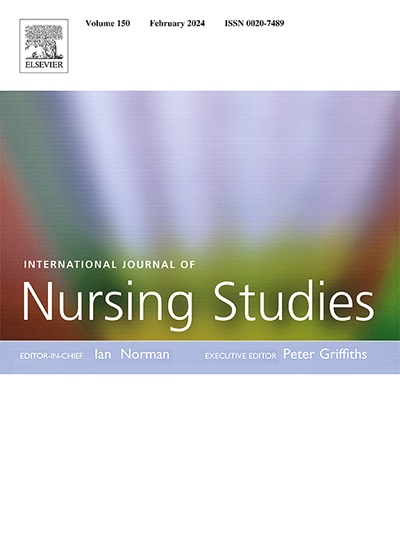通过知识赋权:南非艾滋病毒和结核病感染者对“检测不到等于无法传播”的定性认识。
IF 7.5
1区 医学
Q1 NURSING
引用次数: 0
摘要
不可检测等于不可传播(U=U)是一项教育运动,旨在宣传人类免疫缺陷病毒(HIV)感染者保持不可检测的病毒载量不能将HIV传播给他人的科学知识。研究人员认为,无法检测到的等同于无法传播的信息将通过减少对艾滋病毒传播的恐惧和为废除歧视性政策提供证据来减少艾滋病毒的耻辱。然而,人们对南非的艾滋病毒感染者如何解释他们的病毒载量测试结果知之甚少,无法检测到等于无法传播的信息,或者它对污名化的影响。方法:本定性研究探讨了南非HIV和利福平耐药结核病患者中病毒抑制的知识和解释,以及检测不到等同于不传播。我们进一步探讨了无法检测到等同于无法传播的信息是否会影响艾滋病相关的耻辱感。招募了30名参与者进行连续定性访谈,分别在基线、3个月和6个月的访问中进行。一个跨国团队使用反身性主题分析来开发和解释代码关系。结果:所有参与者均为非洲黑人,平均年龄为36岁,63.3%为男性,其中一半在基线时无法检测到,自HIV诊断以来的中位时间为6.2年。随着时间的推移,确定了四个相互建立的主题,(1)对病毒抑制和不可检测的知识有限,等同于不可传播;(2)认为缺乏对病毒抑制的临床整合和检测不到等同于不传播;(3)病毒抑制观念的改变及其在个体健康中的应用;(4)认可不可检测等同于不可传播和启动卫生伙伴关系。大多数参与者在最初的采访中没有听说过病毒抑制或不可检测等于不可传播。将病毒抑制或无法检测到的等同于无法传播的病毒整合到诊所就诊中,这助长了一种看法,即病毒抑制仅仅是验证依从性的工具。随着时间的推移,参与者开始理解病毒抑制和不可检测等同于不可传播的重要性,这使参与者能够在他们的艾滋病毒管理中发挥更积极的作用,并要求医疗保健系统做出改变。结论:参与者通过个性化的艾滋病毒教育发现了乐观和赋权,即使无法检测到等同于无法传播的信息对污名化的影响很小。南非医疗保健系统存在结构性障碍,限制了获得量身定制的健康教育。通过利用社区卫生工作者和注册护士,艾滋病毒诊所可以改善教育机会,而不会使资源紧张的卫生保健系统负担过重。这些结果确定了加强卫生系统的各种机会,这些机会建立在无法检测到等同于无法传播的全球势头的基础上。本文章由计算机程序翻译,如有差异,请以英文原文为准。
Empowerment through knowledge: Qualitative perceptions of ‘undetectable equals Untransmittable’ among people living with HIV and tuberculosis in South Africa
Introduction
Undetectable equals untransmittable (U = U) is an education campaign promoting science that people living with human immunodeficiency virus (HIV) who maintain an undetectable viral load cannot transmit HIV to others. Researchers theorize that undetectable equals untransmittable messaging will decrease HIV stigma by reducing fears of HIV transmission and providing evidence to dismantle discriminatory policies. However, little is known about how people with HIV in South Africa interpret the results of their viral load tests, undetectable equals untransmittable messaging, or its impact on stigma.
Methods
This qualitative study explored knowledge and interpretation of viral suppression, and undetectable equals untransmittable among people with HIV and rifampicin-resistant tuberculosis in South Africa. We further explored whether undetectable equals untransmittable messaging influences HIV-related stigma. Thirty participants were recruited for serial qualitative interviews, conducted at baseline, 3-month, and 6-month visits. A multi-national team used reflexive thematic analysis to develop and interpret code relationships.
Results
All participants were Black African, age on average was 36 years, 63.3 % were male, and half were undetectable at baseline with a median 6.2 years since HIV diagnosis. Four themes were identified that built on one another over time, (1) limited knowledge of viral suppression and undetectable equals untransmittable; (2) perceived lack of clinical integration of viral suppression and undetectable equals untransmittable; (3) Changing perceptions of viral suppression and application to individual health; and (4) endorsement of undetectable equals untransmittable and activation towards health partnership. Most participants had not heard of viral suppression or undetectable equals untransmittable at the initial interview. There was limited integration of viral suppression or undetectable equals untransmittable into clinic visits fueling a perception that viral suppression was solely a tool for verification of adherence. Over time, participants came to understand the significance of viral suppression and undetectable equals untransmittable, which empowered participants to take a more active role in their HIV management and request changes from the healthcare system.
Conclusions
Participants found optimism and empowerment through individualized HIV education even though undetectable equals untransmittable messaging had little impact on stigma. There are structural barriers in the South African healthcare system that limit access to tailored health education. By leveraging community health workers and enrolled nurses, HIV clinics can improve education access without overtaxing a resource strained healthcare system. These results identify a variety of opportunities for health system strengthening that build on the global momentum of undetectable equals untransmittable.
求助全文
通过发布文献求助,成功后即可免费获取论文全文。
去求助
来源期刊
CiteScore
15.00
自引率
2.50%
发文量
181
审稿时长
21 days
期刊介绍:
The International Journal of Nursing Studies (IJNS) is a highly respected journal that has been publishing original peer-reviewed articles since 1963. It provides a forum for original research and scholarship about health care delivery, organisation, management, workforce, policy, and research methods relevant to nursing, midwifery, and other health related professions. The journal aims to support evidence informed policy and practice by publishing research, systematic and other scholarly reviews, critical discussion, and commentary of the highest standard. The IJNS is indexed in major databases including PubMed, Medline, Thomson Reuters - Science Citation Index, Scopus, Thomson Reuters - Social Science Citation Index, CINAHL, and the BNI (British Nursing Index).

 求助内容:
求助内容: 应助结果提醒方式:
应助结果提醒方式:


